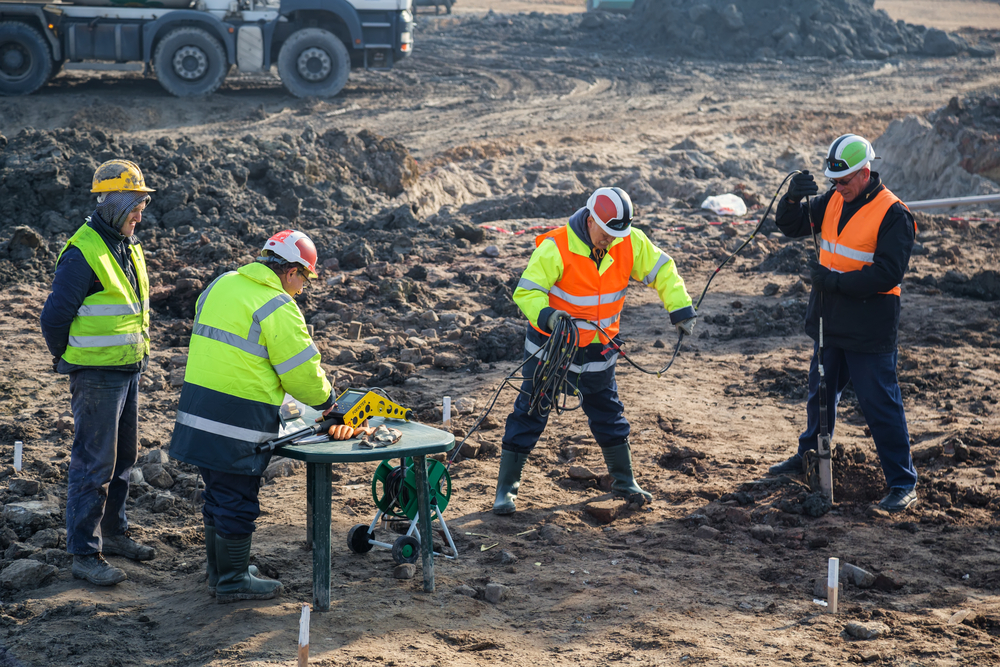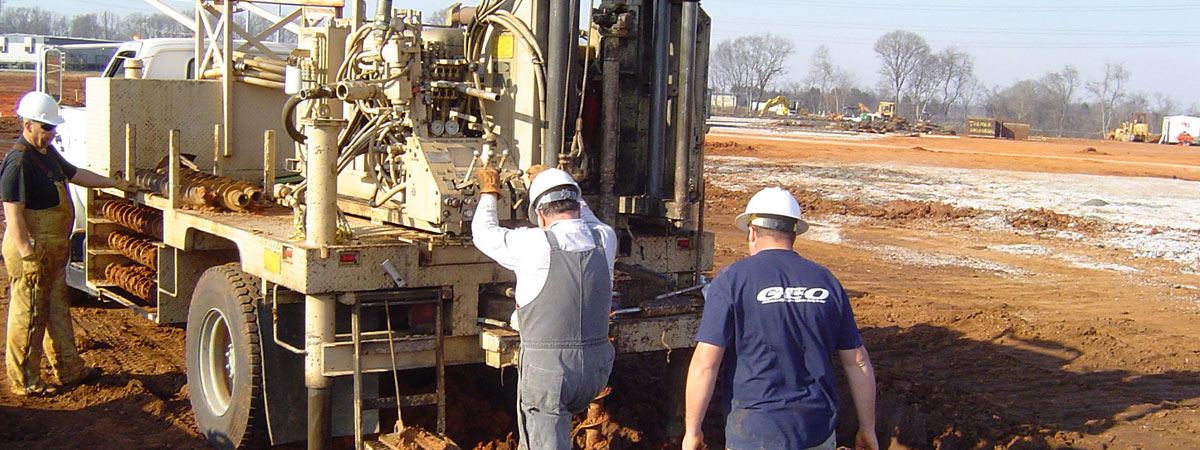Leading Geotechnical Engineers for Cutting-Edge Dirt Analysis and Structure Design
Wiki Article
The Relevance of Dirt Analysis and Website Investigation in the Geotechnical Industry: Ensuring Security and Security in Civil Design
In the geotechnical market, dirt evaluation and site examination are fundamental elements that underpin the security and stability of civil engineering jobs. By extensively comprehending dirt properties, engineers can preemptively address potential difficulties, inevitably safeguarding structural stability.Recognizing Soil Residences
In the world of geotechnical engineering, an extensive understanding of dirt properties is critical for educated decision-making and reliable project design. The characterization of soil involves the examination of various physical and mechanical homes, such as grain dimension distribution, plasticity, communication, shear, and permeability strength. These homes determine exactly how dirt acts under various loading conditions and ecological impacts, making them vital for analyzing website viability for building projects.Soil classification systems, such as the Unified Dirt Category System (USCS) and the AASHTO classification, offer structures for grouping dirts based on their qualities. This category help engineers in forecasting habits under stress and anxiety, water circulation, and negotiation, therefore affecting style choices and construction strategies.
In addition, the interaction between soil and surrounding structures is a vital consideration in geotechnical design. Recognizing soil properties helps recognize prospective challenges, such as liquefaction in earthquake-prone locations or excessive negotiation in soft dirts. By extensively assessing these residential properties, geotechnical engineers can make sure the safety, stability, and longevity of frameworks, inevitably adding to the total resilience of civil engineering tasks.
Methods of Dirt Evaluation

In-situ examinations consist of strategies such as Standard Infiltration Tests (SPT), Cone Infiltration Examinations (CPT), and vane shear examinations. SPT reviews the resistance of soil to infiltration, giving information on density and toughness, while CPT gauges soil resistance and pore stress, generating constant accounts of dirt stratigraphy. Vane shear tests are especially valuable for examining the shear stamina of cohesive dirts.
Research laboratory tests enhance these in-situ evaluations and entail sampling soil for controlled testing. Usual laboratory methods include Atterberg limits, which determine the plasticity features of fine-grained dirts, and compaction examinations, which examine moisture-density relationships. Extra examinations, such as triaxial compression and unconfined compression tests, are conducted to evaluate the shear stamina of dirt examples under different conditions.
Role of Website Investigation
Site examination plays a crucial function in the geotechnical engineering procedure, offering as the foundation for recognizing subsurface conditions. This comprehensive analysis includes methodical expedition of soil and rock properties, groundwater degrees, and other geological features that affect job safety and security.Typically, site examinations incorporate a range of techniques, including drilling boreholes, sampling, and in-situ screening. These methods supply important data on the mechanical and physical features of the ground, informing engineers regarding potential challenges such as soil settlement, birthing capacity, and slope stability.
Additionally, site examination facilitates the recognition of hazardous materials and impurities, making it possible for the implementation of proper remediation steps. By developing an accurate subsurface profile, website investigations assist to alleviate threats connected with construction, making sure that projects comply with safety and security standards and guidelines.
The findings from a comprehensive site investigation not just guide style decisions yet additionally affect building and construction methodologies and timelines. In summary, the value of site investigation can not be overstated; it is a crucial step in the geotechnical engineering process, laying the groundwork for successful task implementation while focusing on public safety and security and ecological honesty.
Influence on Task Design
A complete understanding of dirt characteristics considerably influences project design in the geotechnical industry. Dirt evaluation educates designers concerning the mechanical properties, make-up, read this article and actions of the ground, which are critical elements in figuring out the expediency and safety of a construction task. Precise data on dirt compressibility, stamina, and permeability enable the growth of efficient foundation layouts, making sure that structures are adequately sustained and stable throughout their life-span.Furthermore, the visibility of pollutants or unpredictable soil layers can motivate adjustments in task style, such as picking alternate construction techniques or materials. This positive strategy reduces threats associated with dirt settlement, too much loading, or side movement, therefore securing both the honesty of the structure and public security.
The assimilation of soil analysis right into task design likewise facilitates conformity with environmental factors to consider and governing demands. By dealing with soil-related difficulties early in the layout process, designers can enhance resource appropriation and decrease prospective delays and expenses connected with unforeseen site conditions. Ultimately, detailed dirt evaluation boosts the total top quality and resilience of civil engineering jobs, causing even more durable and sustainable framework.
Instance Researches and Instances
Showing the crucial function of soil analysis in the geotechnical market, various situation research studies highlight its influence on project outcomes. One significant instance is the building and construction of a skyscraper in midtown Los Angeles, where substantial soil testing disclosed unstable subsurface problems. consulting see this page engineer. By determining the visibility of extensive clay, engineers were able to upgrade the structure, integrating deep pilings that guaranteed stability and security, eventually investigate this site avoiding possible structural failures
Lastly, a dam job in the Southeast encountered delays due to unforeseen dirt erosion issues. In-depth soil analysis enabled engineers to carry out reliable stabilization techniques, making sure that the dam fulfilled safety laws while sticking to the task timeline. These instances underscore the necessity of extensive soil analysis and site investigation, highlighting their necessary duty in attaining effective and safe civil engineering projects.
Final Thought
Finally, dirt analysis and site examination are essential elements of the geotechnical market, playing a crucial function in ensuring the safety and stability of civil engineering projects. By offering vital information on dirt residential properties and subsurface problems, these procedures notify foundation design and construction approaches. In addition, complete examinations add to hazard recognition and threat mitigation, ultimately improving the durability and resilience of structures while maximizing source allowance throughout the project lifecycle.In the geotechnical industry, dirt analysis and website investigation are foundational components that underpin the security and stability of civil design jobs. Understanding dirt properties aids determine possible difficulties, such as liquefaction in earthquake-prone areas or too much settlement in soft soils. SPT assesses the resistance of soil to infiltration, offering information on density and stamina, while CPT determines soil resistance and pore stress, producing constant profiles of soil stratigraphy. These instances underscore the need of complete soil evaluation and site examination, highlighting their important duty in achieving effective and secure civil engineering tasks.
In conclusion, soil evaluation and site investigation are basic parts of the geotechnical industry, playing a critical role in ensuring the security and security of civil design projects.
Report this wiki page